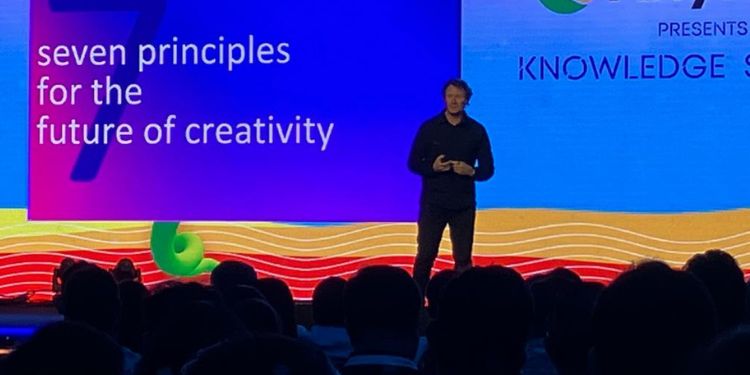
“Our biggest sin is when we start differentiating things for efficiency,” said, Nick Law – Global Creative Chairperson, Accenture Song, outlining ‘Seven Principles For The Future Of Creativity’ on the third and final day of Goafest 2023.
The inverted pyramid-shaped funnel that started with awareness through to consideration and ended at the sharp end of action doesn’t hold anymore, underlined the speaker, contending that it has given way to an onion-shaped funnel. The expanded middle of this funnel is the area of consideration, with both awareness and action constricted.
“You need to start in the middle and that’s really important in the advertising world. The middle (of the onion) is chaos. The internet has become a mash pit of information. People spend some time on brand experiences but for most part they are on Reddit or Youtube (or somewhere else). The consumer (funnel) is behaving like an onion while the industry is designed like an hourglass (with art at one end and math on the other). We’ve vacated the middle because of our preference for art (creative) and math (performance marketing),” explained Law.
In jest, he noted that art is making beautiful things that no one sees while math is making ugly things that no one is seeing, attributing it to ‘competing cultures’ between creative and performance marketing.
Apple, the world’s most valuable brand, was built by helping people understand its brand (Think Different), reminded the speaker.
‘Start in the middle’ was the seventh principle listed by the speaker, after urging ‘Deep simplicity’ made possible by technologists understanding complexity and creative people simplifying it for consumers.
‘Separating creative and media a big mistake’
Remaining ‘Loose with ideas, tight with execution’ was another principle advocated by Law.
On the perception of some creative people who view technology as the enemy, he said, “You can’t crack creative without technology to take an idea and put it out in the world. Separating creative and media was a big mistake. The important thing about new technology is that when they emerge, it comes from technologists, but we need to get creative people to work on it as soon as possible.”
Contending that ‘Technology is creative’ the speaker cited examples of photography and film, which evolved when creative people adopted them.
“Photography turned into an art form when creative people adopted it. Film started in the theatre format. Creative people created a new grammar of film. We need more creative people to adopt (tech like) Generative AI than non-creative people (others),” underlined Law.
Singular vision, collective culture
Making the case against a consensus approach, the Accenture Song executive advocated a singular vision at the top with everyone aligned. The nature of creativity right now is collaborative, he noted – all the more reason for this vision to clearly percolate across, he emphasised.
“When you see the credit roll at the end of a film, there are hundreds of people who have worked on it, all aligned with the director’s singular vision,” likened the speaker.
Referring to ‘Synthetic connection’ as another principle for the future, Law explained it as people with two different skill sets making something that they couldn’t, individually. “This is organic, not a transfer of information. This connection is a conversation. The advertising industry is built on one such connection – art and copy,” said Law.
He cited the change ushered in by DDB’s Bill Bernbach and what advertising was before Beetle’s ‘Think Small’ was created. For the first time, the world saw advertising where art without the copy or copy without the art wouldn’t work, he demonstrated.
“If you take the image or copy away, it won’t work,” noted Law. It was organisational innovation that changed the industry, underlined Law.
He referred to a similar change that was ushered in during his time at RGA, synergising the synthetic connection between design and storytelling, each of which is worked on by a different half of the brain, reorganising people around stories and systems.
Consistent principles, dynamic practices
“To deal with rapid changes, if you don’t have principles, you won’t be able to respond to that,” said the speaker. He cited the cases of Nike and Apple, whose founding documents continue to guide the brands.
Among principles Law cited in a crisp talk that opened knowledge sessions on the day, was to ‘First, design yourself’.
Underlining the need to have processes that connect people across the organisation, he urged the audience to ask themselves: What pieces of the organisation are you connecting? How are you connecting them?
Besides ‘Synthetic connections’ mentioned above, he pointed to two more types of connections: ‘Transfer’ connections, which are about transfer of information; ‘Compound’ connections, where one element makes the other better (like creative and strategy, data and analytics);
While on that point, Law spotlighted an advertising truth that many have seem to have forgotten: strategy that does not lead to good creative is not strategy that works.
Feedback: [email protected]

















